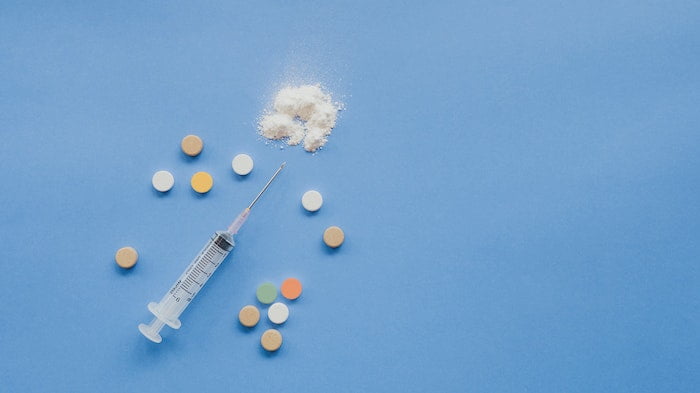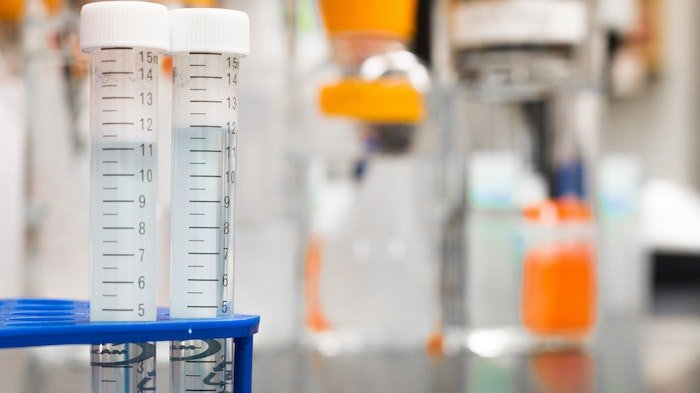How Long Do Opioids Stay in Your System?
The time that it takes for opioids to leave the system depends on a lot of different factors.
Here, you will find information all about opioids – what they are, how they are taken, how long they stay in the system, and what kinds of drug tests are used to identify them.
What are Opioids?

Opioids are their own class of drug.
‘Opioid’ refers to a group of drugs that stimulate the opioid receptors in our nerve cells.
This stimulation works to block the transmission of pain signals.
That means there are many different kinds of drugs that are known as opioids.
To learn more about opioids, talk to our expert team today on 0800 088 66 86
What are the Different Types of Opioids?

There are many different drugs within the opioid family, including artificial, natural, legal and illegal substances.
Medical and Illegal Use
Opioids have painkilling properties.
This means that there are some opioids that can be accessed via medical prescription, whereas there are others that are classed as illegal drugs.
Prescription opioids are usually prescribed to help patients with the management of extreme pain.
As opioids can be extremely addictive, prescription opiates tend to only be given to patients in cases of severe, unmanageable pain.
This means that prescription opioids are usually only turned to as a final method of treatment, as a way of mitigating the risks associated with taking opioids as pain relief.
Examples of prescription opioids include:
- Buprenorphine
- Codeine
- Fentanyl
- Hydrocodone
- Hydromorphone
- Methadone
- Morphine
- Oxycodone
- Oxymorphone
- Tramadol
The most common illegal opioid is heroin.
Natural and Synthetics
Opioids can also be naturally sourced or synthetic.
Natural opioids are also known as opiates.
Examples of naturally sourced opioids include:
- Codeine
- Morphine
- Thebaine
Examples of synthetic opiates include:
Heroin is considered to be semi-synthetic because it is predominantly derived from morphine.
Despite this, heroin is usually classified as an opiate.
Don’t let addiction control your life – start your journey towards sobriety by calling us on 0800 088 66 86
What are the Different Names for Opioids?

Opioids are known by many different names, both medical terms and street names.
Some common examples include:
- Blue heaven
- Brown sugar
- Captain cody
- Cody
- Dance fever
- Goodfella
- Opiates
- Painkillers
- Narcotics
- Smack
- Skunk
Think you might have an opioid problem? Talk with our experts on 0800 088 66 86
What are the Different Ways that Opioids Can Be Used?

Opioids can be taken in various different ways.
Methods of using prescription opioids include:
- Swallowing tablets
- Intravenous use of opioids such as morphine
Methods of using non-medical opioids include:
- Swallowing tablets
- Crushing tablets
- Inhaling powder
- Injecting
Whatever the nature of your opioid addiction, get the help you need to become sober by calling us on 0800 088 66 86
How Common is Opioid Use?

As there are several types of opioids, it is difficult to establish exactly how common opioid use is.
A 2014/2015 Crime Survey for England and Wales found that 7.2% of people between the ages of 16 to 24, and 4.9% of adults between the ages of 25 to 59 had misused a prescription-only painkiller that was not prescribed to them.
A survey from The Office for National Statistics found that almost half of all registered drug poisonings in 2021 involved the use of opioids.
A second survey found that over half of adults (51%) in treatment for substance use were users of opiates.
There are strict deadlines from the Faculty of Pain Medicine that help medical professionals to identify when opioid treatment should be utilised.
Don’t become another statistic – beat opioid addiction today by giving us a call on 0800 088 66 86
What is in Opioids?

There are many different types of opioids, all with slightly different sets of contents.
Opiates (natural forms of opioids) are made from part of a poppy plant (Papaver Somniferum).
The substance taken from the poppy plant (diamorphine) is what works as the active ingredient and achieves the painkilling effects.
With opioids (synthetic substances), the active ingredient of diamorphine is not always derived directly from the poppy plant and can be produced in a laboratory.
As the substance made from the lab has a very similar chemical makeup to the diamorphine taken from the poppy plant, opiates and opioids have very similar effects on the body.
To discover more about how opioids work, call us today on 0800 088 66 86
The Effects of Opioids: Short Term

There is a wide range of effects that once can experience when taking opioids, both physical and psychological.
Short-Term Psychological Effects of Opioids
- Sleepiness
- Feeling relaxed or ‘mellow’
- Feelings of confusion or disorientation
- Unclear, slurred speech
Short-Term Physical Effects of Opioids
- Slower than usual heartbeat
- Slower than usual breathing
- Nausea or sickness
- Cold skin
- A blue tinge to the fingers and lips
- Dizziness
- Dry mouth
- Itchiness
Have you started noticing any of these effects in yourself? If so, call our team today on 0800 088 66 86
The Effects of Opioids: Long Term

If you use opioids for a prolonged period of time, you are at risk of developing Opioid Use Disorder.
Opioid Use Disorder is identified with three main characteristics:
- Heavy and/or risky use of opioids
- Intense cravings
- Related physical and psychological symptoms
Long-Term Psychological Effects of Opioids
- Sedation
- Decreased interest in sex (libido)
- Decreased attention to hygiene
- Isolation
- Addiction
Long-Term Physical Effects of Opioids
- Intense cravings
- Feeling generally unwell, presenting with flu-like illness
- Physical dependence
- Respiratory issues – in extreme cases, respiratory depression that can lead to death
- Erratic breathing or ‘gasping’
- Constipation
- Addiction
- Bowel obstruction
- Weight loss
- Withdrawal
Like with the use of any drug, there is a risk of overdosing on opioids.
Over half (54%) of drug-related deaths in the UK between 2016 and 2017 were related to opioid use.
Take your health and your happiness into your own hands by calling us today on 0800 088 66 86
How Long does it Take for the Effects of Opioids to Be Felt?

How Long Does it Take to Feel the Effects of Slow-Release Opioids?
The majority of prescription opioids are known as slow-release. This means that the property in the drug that eases the pain is released into the body over a period of 12 hours.
This means that the effects of slow-release opioids should be noticeable for the duration of this time.
How Long Does it Take to Feel the Effects of Heroin?
The length of time between taking heroin and feeling it’s effects will depend on the method of use.
Injecting Heroin
If you inject heroin into a vein, you can feel the effects of the drug in under ten seconds. The ‘high’ may last for a few minutes.
If you inject heroin into the tissue, you can feel the effects of the drug in around eight minutes.
Generally, the after-effects of taking heroin can be felt for several hours after first use.
Whatever way you are abusing opioids, get the support you need to overcome it by calling us on 0800 088 66 86
What Kinds of Drugs Tests are Used in Identifying Opioids?

It is possible to identify the presence of opioids in the body after use.
This is the case for both medical and recreational opioids.
Opioids can be identified in the system through the following forms of drugs testing:
- Saliva testing
- Blood testing
- Urine testing
- Hair testing
How Can a Drugs Test Prove That I Have Taken Opioids?
Diamorphine has a half-life of around 3 minutes. This means that it takes around 3 minutes for the body to break down half of a dose of diamorphine.
This means that heroin has a shorter half-life than other drugs such as cocaine and cannabis, meaning that it is not present in the body for as long as some other drugs.
Your bodily products (saliva, urine, tec.) can be examined for opioid metabolites.
A metabolite is a chemical produced by the body to help break down specific substances.
If these metabolites are present in your test, it will mean a positive test for a substance, indicating that you have taken an opioid.
The metabolite usually used to identify the use of heroin is known as 6-acteylmorphine.
Find your way towards sobriety before it impacts your life further – call us on 0800 088 66 86
How Long Will Opioids Stay in the System?

Each form of opioid drug testing has a different detection window.
A detection window is the period of time after taking the drug when it is possible to identify the substance in your sample.
Typically, the longer the period of time between use and testing, the fewer traces of opioids are likely to be found via the different types of drug tests.
However, the periods of time it takes for opioids to exit your system will depend on a number of factors.
Some of these factors include:
- Your metabolic rate (how fast your body digests or breaks down compounds)
- Your size (height and body mass, percentage of body fat)
- Your age
- The frequency of use (if you are chronic user, or an infrequent user)
- The strength of the drug you have taken
- If you have taken several drugs at the same time
- If you have any pre-existing health conditions
Break free from addiction with the help of a professional drug rehab by giving our team a call on 0800 088 66 86
Drugs Testing and Detection Times

There are some general guidelines on how long opioids stay in your system and are detectable in different parts of your body.
Urine Testing
The presence of heroin can be identified through a urine test for approximately 48 hours after use.
Saliva Testing
The presence of heroin can be identified through a saliva test for approximately 5-6 hours after use.
Hair Testing
The presence of heroin can be identified through a hair test for three months or more after use.
Blood Testing
The presence of heroin can be identified through a blood test for approximately 5-6 hours after use.
Testing for Opioids in Frequent Users
If you are a frequent or ‘chronic’ user of heroin or another opioid, then it is likely that there will be a build-up of opioid metabolites in your system.
This means that the detection times are not always accurate. This is due to an overlapping that can occur due to the heavy or frequent use of opioids, which results in opioid metabolites being stored within the body for longer.
Ensure that your addiction stays under control by reaching out to our team on 0800 088 66 86
Is Drug Testing a Legal Requirement?

Not all opioids are illegal.
However, abusing prescription drugs is very dangerous, and using painkillers that are prescribed to others is a very risky practice.
Heroin is a class A drug. Possessing, using or supplying heroin is therefore a criminal offence.
This means that there are certain circumstances where you may be asked to comply with a drug test in an appropriate context.
Drugs Testing at Work
The use of drug testing in the workplace is a carefully used measure, usually to ensure that all members of staff meet the requirements of certain health and safety measures.
For this to be a fair process, an employer cannot unfairly ask one member of staff to comply with a drugs test – they must ask everyone.
You do not have to give your consent to provide a sample, however, if you do not, your employer is allowed to take further action in response to this.
Drugs Testing by the Police
If you have been involved with a certain offence that means police may have reasonable suspicions that you have used drugs, you may be asked to provide a sample.
Offences that are associated with drug testing are known as trigger offences.
These include:
- Any offence related to theft (or attempted theft)
- Any offence related to robbery (or attempted robbery)
- Any offence related to burglary (or attempted burglary)
- Any offence related to fraud
- Any offence related to stolen goods
- Any offence related to the possession of Class A drugs
- Any offence related to the possession of Class A drugs with intent to supply
Just like in the workplace, you have the right to refuse a drug test from the police. However, there can be legal repercussions because of this – either a fine or a prison sentence.
Get the help you need from a drug rehab near you by giving our team a call on 0800 088 66 86
Opioid Addiction Treatment Options

Addiction to heroin or other opioids, such as painkillers, can be a difficult and often isolating experience.
However, there is no need to feel shame. There are specialist forms of treatment to help you to overcome your addiction and improve your overall well-being and quality of life.
Different kinds of addiction treatment for opioid use can include:
- Acceptance and Commitment Therapy
- Brief Interventions
- Cannabis Rehab
- Co-dependency Treatment
- Cognitive Behavioural Therapy (CBT)
- Contingency management
- Counselling
- Detoxing from heroin
- Dialectical Behavioural Therapy (DBT)
- Family Therapy
- Group Therapy
- Holistic Therapy/ Alternative Therapy (Art Therapy, Music Therapy, Equine Therapy, etc).
- Individual Therapy (1-1 Therapy)
- Motivational Enhancement
- Motivational Interviewing
- Psychotherapy
- Twelve-Step Facilitation Treatment (TSF)
- Therapeutic communities or self-help groups
To experience all of these treatment options and more at a first-class drug rehab, call us on 0800 088 66 86
Ready to Access Help?

Addiction is a complicated, difficult thing to experience.
You may feel that you are struggling alone, but this does not have to be the case.
If you are ready to access support for your use of heroin, you can contact Rehab Recovery at 0800 088 66 86 or use the online form to request a call back from a member of our specialist team about accessing support at a local opioid rehab centre.
If you are uncomfortable with speaking over the phone, you can use our free chat service at any time of day to speak with a professional virtually.




